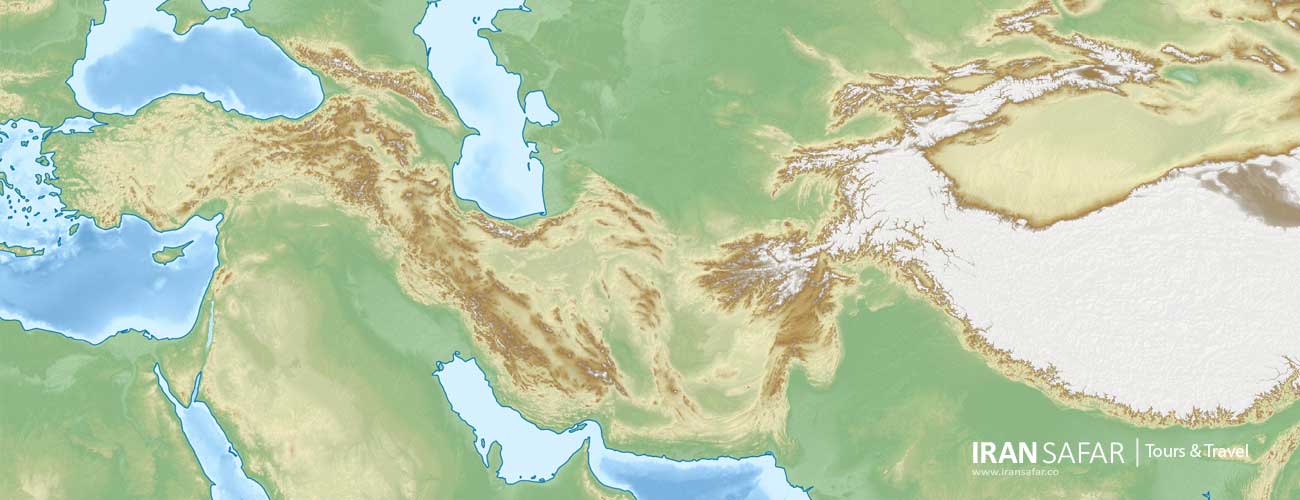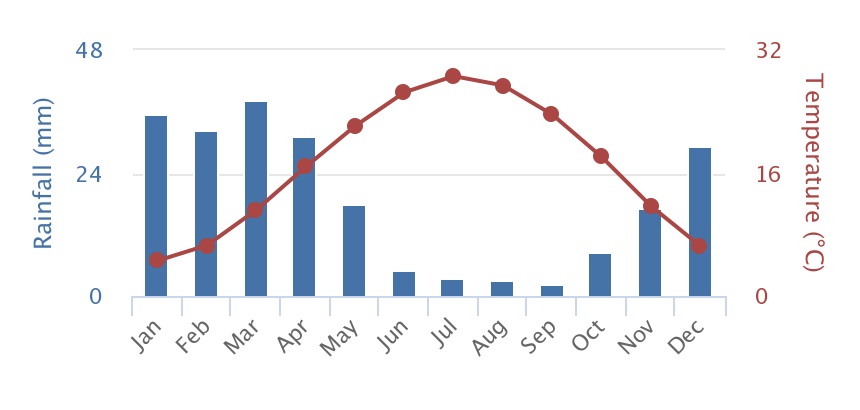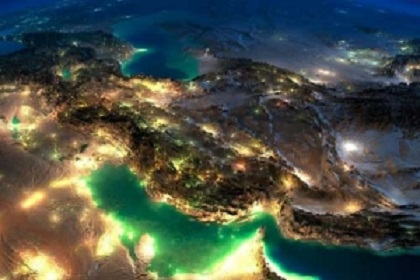Iran can be divided to, at least, four different climate zones. The Climate of the Western and southwestern areas can be classified as BWh Climate; a hot, dry desert climate with annual average temperatures above 18°C. a small zone between the Persian Gulf the Turkish Border in the mid of Iran can be classified as BSh climate, a hot, dry Climate with the annual average Temperature above 18°C. The eastern and northern areas of Iran have a Csa Climate; a mild, semi-humid climate with dry summers, mild winters and the warmest month above 22°C. Finally, the mountainous regions of northern Iran can be classified as Dsa Climate, a cold snow Climate with dry summers and wet winters with the warmest month over 22°C and the coldest month below -3°C.
 Iranian Plateau
Iranian Plateau
Iran has a hot, dry climate characterized by long, hot, dry summers and short, cool winters. The climate is influenced by Iran’s location between the subtropical aridity of the Arabian desert areas and the subtropical humidity of the eastern Mediterranean area. January is the coldest month, with temperatures from 5°C to 10°C, and August is the hottest month at 20°C to 30°C or more.
In most of the areas, summers are warm to hot with virtually continuous sunshine, but high humidity on the southern coastal areas of the Persian Gulf. Daily Temperatures can be very hot; on some days temperatures can reach easily 40°C or more, especially along the Persian Gulf and Oman Sea which causes a danger of heat exhaustion.
About 70 percent of the average rainfall in the country falls between November and March; June through August are often rainless. Rainfall varies from season to season and from year to year. Precipitation is sometimes concentrated in local, but violent storms, causing erosion and local flooding, especially in the winter months. A small area along the Caspian coast has a very different climate, here rainfall is heaviest from late summer to mid winter but falls in general throughout the year.
 In general, Iran has a continental climate in which most of the relatively scant annual precipitation falls from October through April, The hot season lasts for 3.6 months, from May 28 to September 17, with an average daily high temperature above 30°C. The hottest day of the year is July 13, with an average high of 36°C and low of 25°C.
In general, Iran has a continental climate in which most of the relatively scant annual precipitation falls from October through April, The hot season lasts for 3.6 months, from May 28 to September 17, with an average daily high temperature above 30°C. The hottest day of the year is July 13, with an average high of 36°C and low of 25°C.
The cool season lasts for 3.5 months, from November 23 to March 7, with an average daily high temperature below 12°C. The coldest day of the year is January 23, with an average low of 0°C and high of 8°C.
Best season of Year to Visit Iran
To characterize how pleasant the weather is in Iran throughout the year, we compute two travel scores.
The tourism score favors clear, rainless days with perceived temperatures between 18°C and 26°C. Based on this score, the best times of year to visit Tehran for general outdoor tourist activities are from early April to early June and from early September to end of November, .
Required clothing in Iran
Lightweight Cotton clothes are advised in the summer, with a sweater for cooler evenings, especially in the inland areas. waterproof medium wear is recommended for the winter, and warmer clothing for the mountainous areas of northern Iran.
Iran average precipitation
Iran has a continental type of climate, with cold winters and hot summers prevalent across the plateau. On the plateau, the annual rainfall does not exceed 30 cm (12 in), with the deserts and the Persian Gulf littoral receiving less than 13 cm (5 in). Snow falls heavily on the mountain peaks and is the principal source of water for irrigation in spring and early summer. The Caspian littoral is warm and humid throughout the year, and the annual rainfall is from about 100 to 150 cm (40–60 in).
The rainy period of the year lasts for 7.3 months, from September 16 to April 27, with a sliding 31-day rainfall of at least 0.5 inches. The most rain falls during the 31 days centered around November 6, with an average total accumulation of 1.1 inches.
The rainless period of the year lasts for 4.7 months, from April 27 to September 16. The least rain falls around June 17, with an average total accumulation of 0.1 inches.




Comment (0)